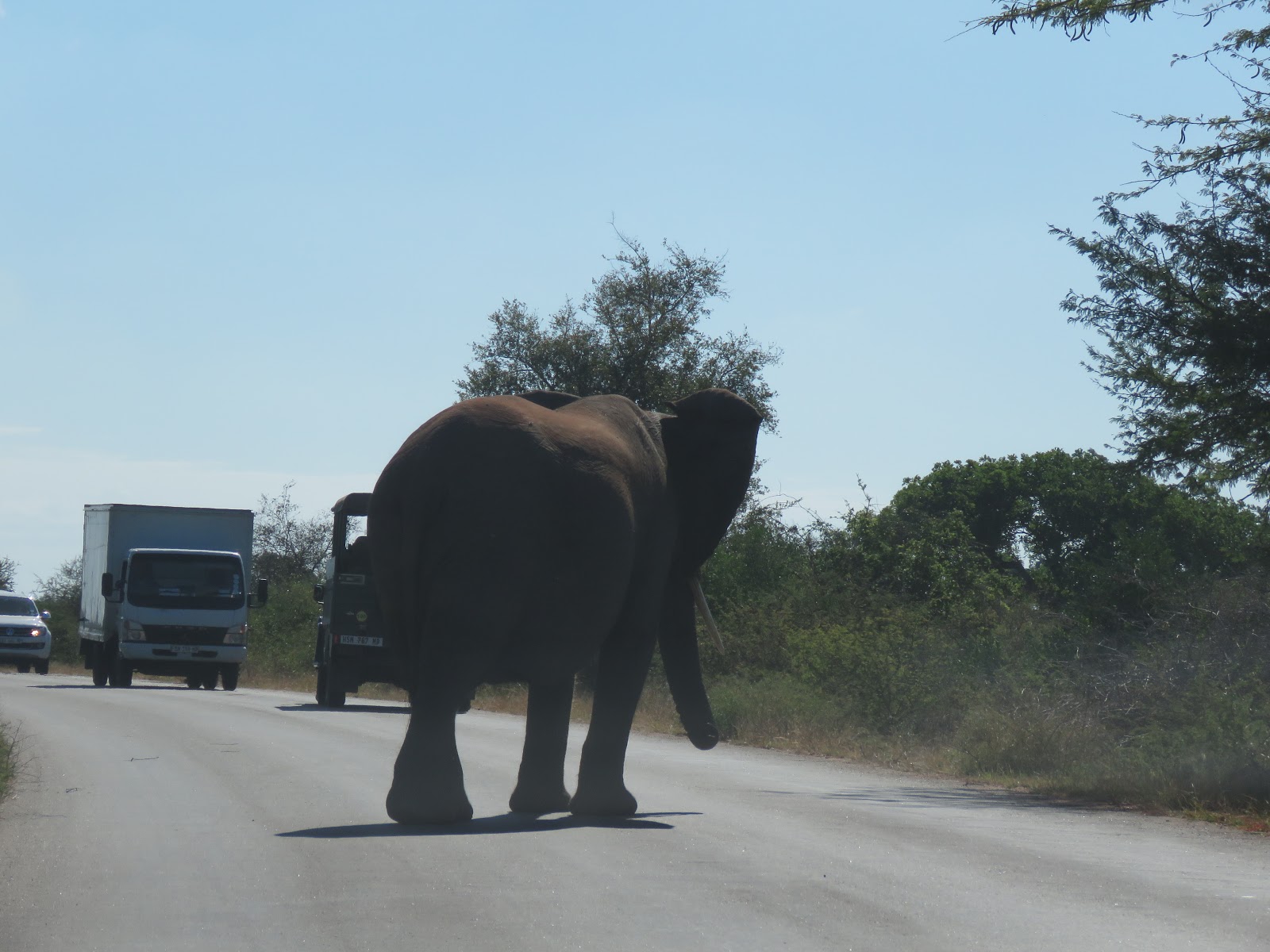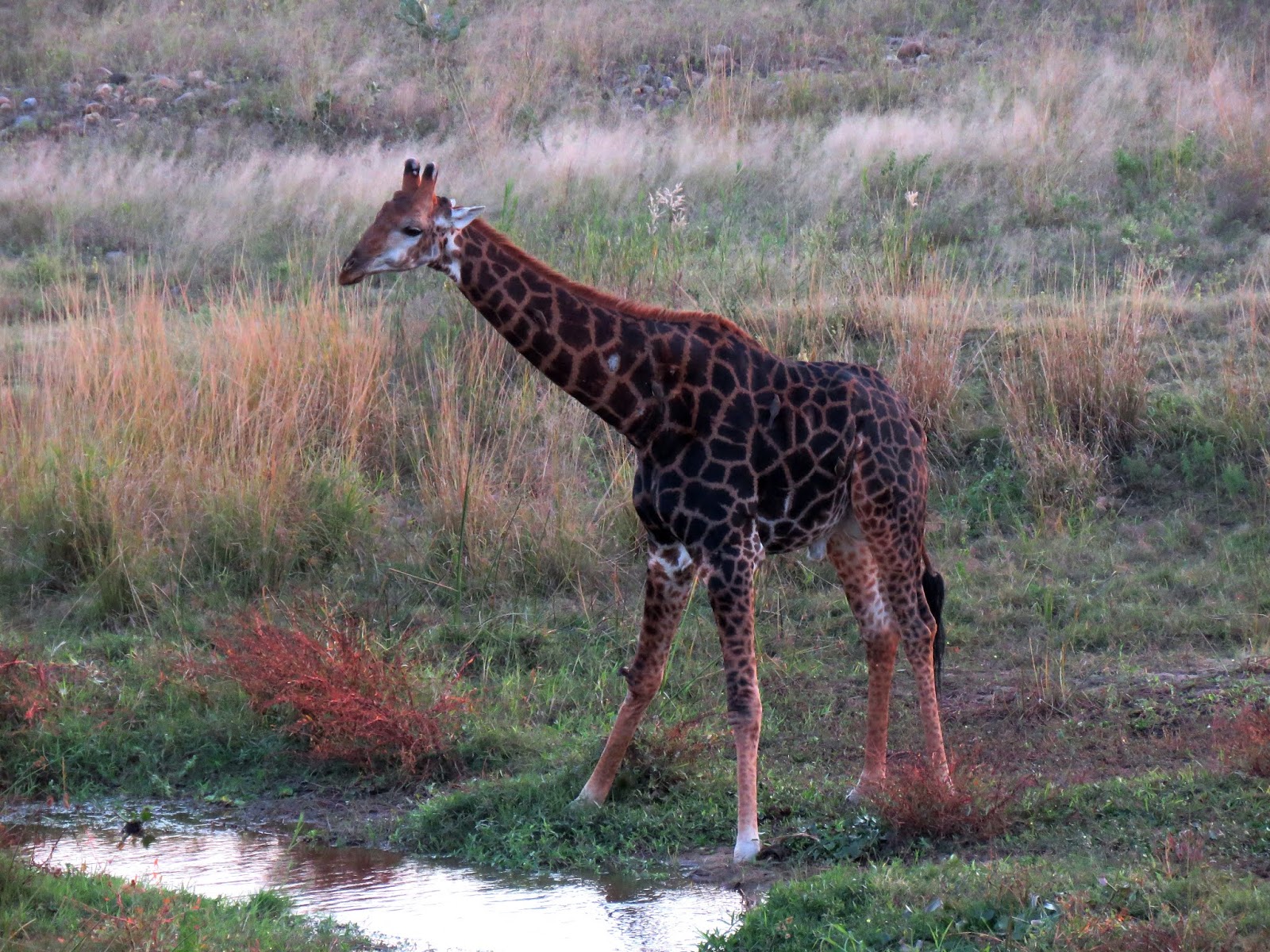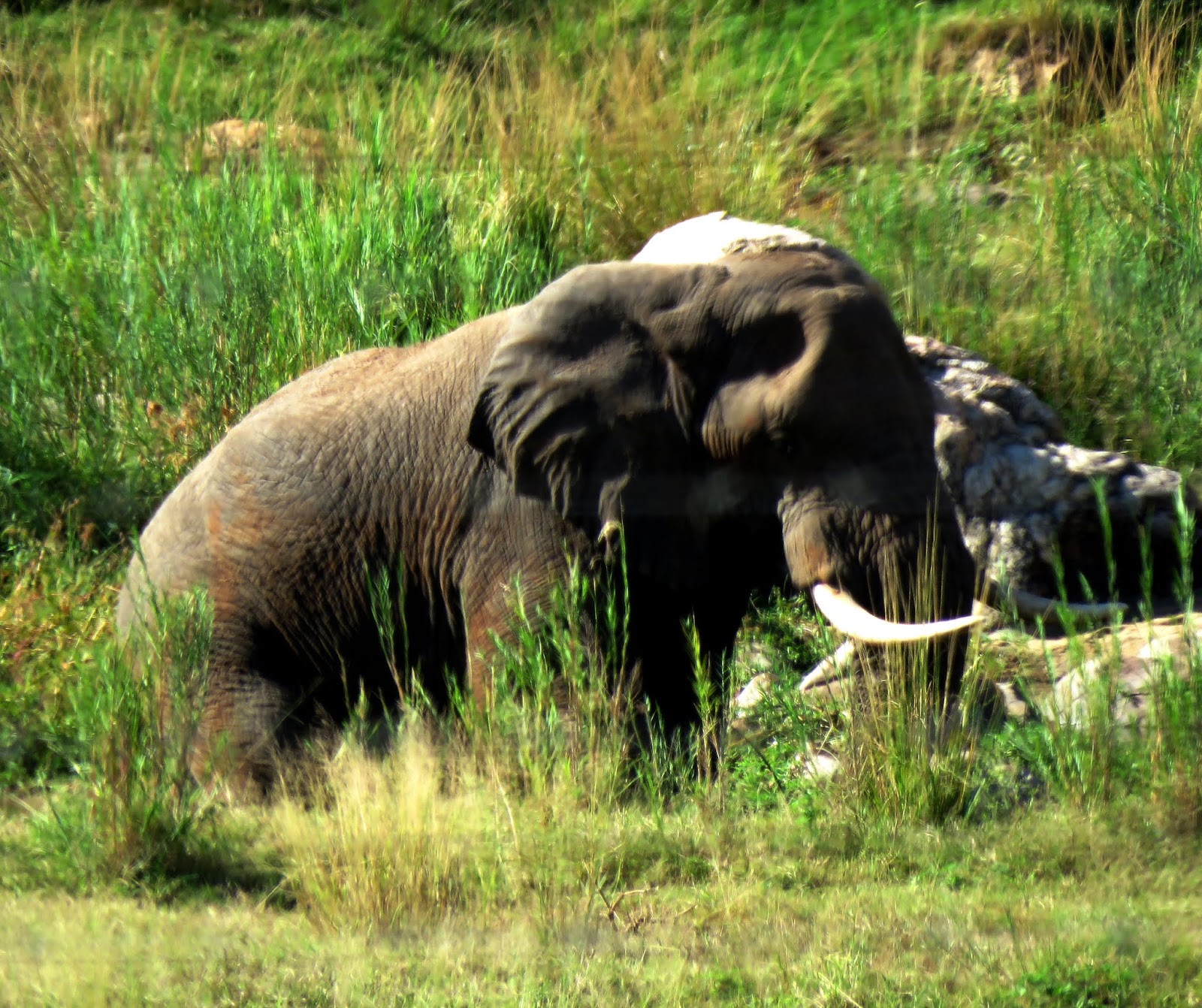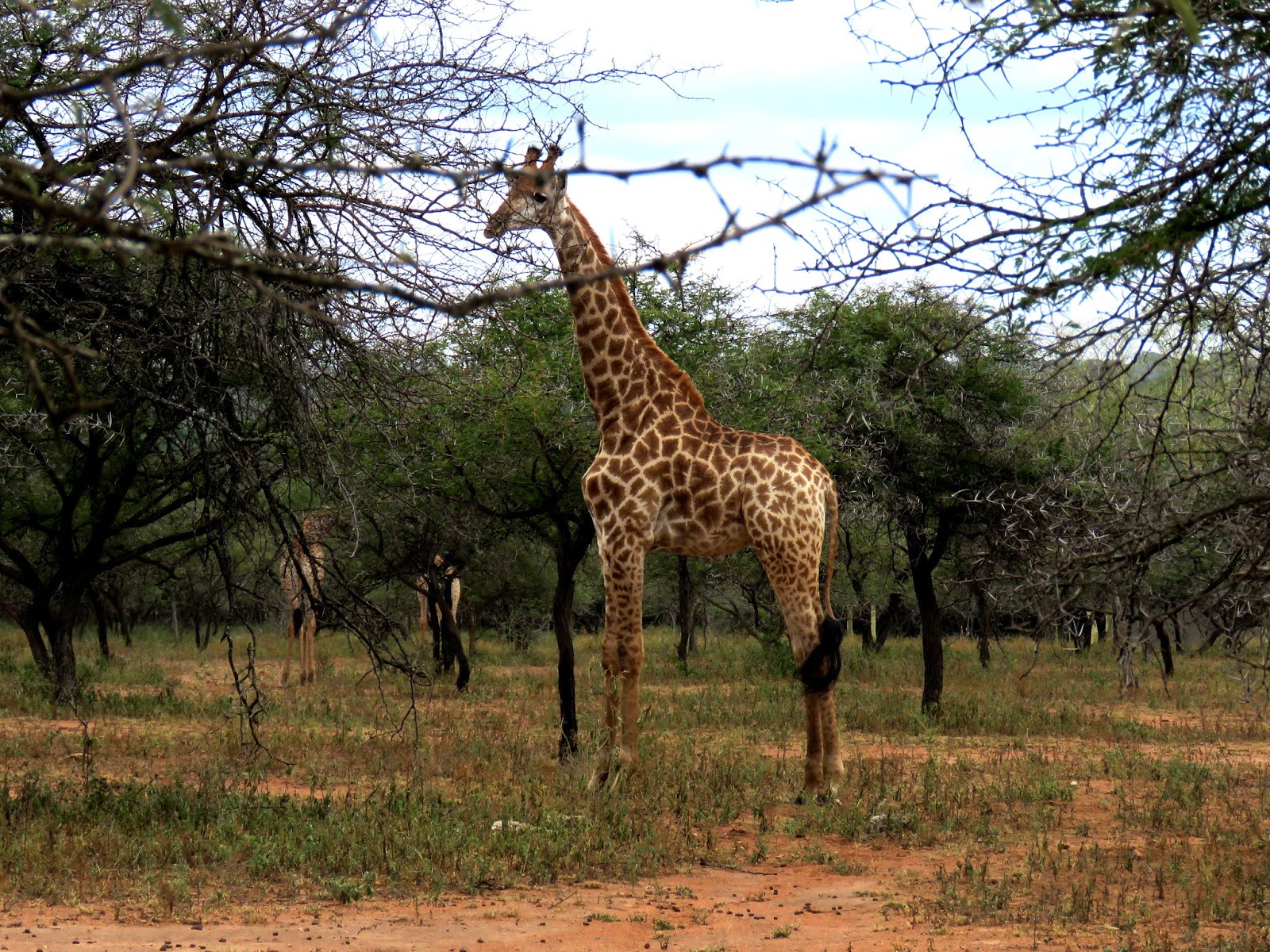 |
| At quite a distance, a cheetah cub. |
“Sighting of the Day in the Bush”
 |
||
This creepy fuzzy thing is actually an African Silk Worm that contains an entire group of individual caterpillars. They cause horrible irritation if they come in contact with skin. We saw this on the wall of the veranda this morning and moved them to another spot. But, they returned to make the “train” shown below.
|
 |
| These African Silk Worms reappeared on the veranda wall into a clump, including many of these odd caterpillars. |
Preparing for a dinner party is never easy, and as much as I can enjoy cooking at times, it’s all the little details that are time-consuming and require attention to detail.
Oh, don’t get me wrong, we love having the opportunity to reciprocate for the many dinner invitations we’ve received in these past four months. But, regardless of the menu, simple or elegant, planning and prepping requires lots of attention to detail, cleaning up while cooking, and ensuring the dinner party area, the house. The guest bathroom is clean and ready for guests.
 |
| I’d forgotten to change the camera back to daylight photos after taking photos the prior night. Nonetheless, we were happy to see some cats in Kruger finally. |
One might think it’s easy with us having Marta living on the premises and cleaning the house as needed, and also Josiah, who cleans the veranda, the gas grill, the pool, and the yard Monday through Friday, makes the process easy.
Even with the help (usually done by noon), we’ve still been busy getting ready for tonight’s dinner party for six. Deciding what to prepare always seems to be the most difficult. I always try to plan items that don’t require a lot of last-minute prep.
 |
| Skinny cheetah crossing the road. |
Between yesterday afternoon, after our shopping trip to Komatipoort and again this morning beginning at 6:30 am, I’ve got a good handle on the starters, salad, main courses, and dessert. Thus, the late post today. Sorry about that.
Actually, I’d hoped to keep the post uncomplicated in its content and photos based on the fact I still have more to accomplish yet this afternoon. The party begins at 5:00 pm, in time for the arrival of the dozen or so bushbabies and, of course, the sunset, which is tough to see through the bush where we’re located.
 |
| Another cheetah meandering down Kruger’s tar road, hoping to see a possible meal for her and her cubs. |
In these past few days, our minds keep wandering back to the successful time we had on Wednesday in Kruger with friends and wildlife. Seeing our friends and posting yesterday’s video was the highlight for both of us.
A few hours after uploading the elephant video, shown here in this post, we were contacted again by Kruger National Park (SANParks), asking if we’d allow them to post yet another of our videos on their site. We’re flattered by their interest but have reached a point where we have to decide…do we want to monetize our videos?
 |
| This elephant wasn’t thrilled to see us coming and began flapping his ears and roaring. We waited until it was safe and drove past him. |
We have mixed feelings about this. All along, we mentioned how we’d worked hard to avoid making this site about money. That way, it doesn’t feel like “work.” It’s done for pure love and joy.
 |
| Note the vegetation-filled cheeks on this giraffe. Often they collect massive amounts of greenery in their mouths and gradually swallow it down. |
In the past few weeks, we’ve had several media outlets contact us interested in monetizing our videos; we’re at a loss if we’re interested in doing so. Providing them to Kruger is for “free,” but in doing so, we forfeit the right to ever “sell them” down the road.
We love Kruger and appreciate their intent to place ads on videos to offset conservation costs. We understand and respect this and appreciate the opportunity to participate in this mission.
 |
| Elephants grazing in the bush in Kruger. |
We’ve treasured the fact that we haven’t monetized our videos. But, as costs increase over these years of world travel and with a tight fixed income with no increases for inflation, we wonder if we can supplement a small portion of the costs of managing our site through alternative methods, such as monetizing our videos.
We’d love to hear your opinions on this topic. Please write to us and let us know what you think. What would YOU do in this situation?
 |
| An Egyptian goose. |
On Wednesday, in Kruger, visiting with friends and spotting lots of stunning wildlife, we had many excellent photos ops which we’ll continue to share over the next few days.
We were especially excited to have finally seen “cats” in Kruger for the first time since our arrival, as shown in today’s above photos. For some odd reason, lions and leopards have alluded to us while in South Africa. Although we saw the Big 5 in the first 10 hours in Kenya, we’ve yet to do so here.
 |
| Large crocodile sunning on the bank of the Sabie River. |
Of course, everyone wants to see lions and leopards as two of the Big 5. For us, cats of any breed are exciting and rewarding to spot, although we’re not fixated on the Big 5. I suppose for most safari fans, the desire for lions and leopards is fueled by their elusive nature and infrequent sightings.
 |
| A “bloat” (appropriately named) of hippos in the Sabie River. |
Now, at 12:30 pm Friday, we’re situated on the veranda on yet another gorgeous and sunny day. The temp is 27C (80.6F), and although it will cool down considerably when darkness falls, we have no doubt we’ll all be comfortable on the veranda for our dinner party as more nature comes to call in the evening.
Have a fabulous day and upcoming weekend. We’ll be back tomorrow with more!
Photo from one year ago today, June 15, 2017:
 |
| Tom and son TJ selfie while at a ballgame. For more Minnesota photos, please click here. |










































































































